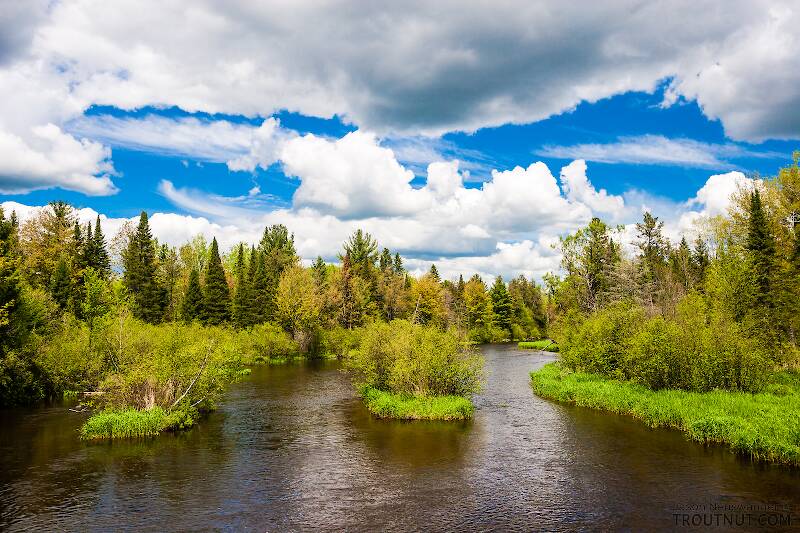
Salmonflies
Pteronarcys californica
The giant Salmonflies of the Western mountains are legendary for their proclivity to elicit consistent dry-fly action and ferocious strikes.


Caddisfly Species Oecetis disjuncta (Long Horn Sedges)
Where & when
Time of year : Peaks in late June
In 33 records from GBIF, adults of this species have mostly been collected during June (42%), July (33%), August (12%), and May (9%).
In 45 records from GBIF, this species has been collected at elevations ranging from 943 to 9318 ft, with an average (median) of 5876 ft.
Species Range
Identification
Species ID from GBIFthe Global Biodiversity Information Facility
Source: Review and redescription of species in the Oecetis avara group, with the description of 15 new species (Trichoptera, Leptoceridae)
Diagnosis. This species differs from the form that has most often been attributed to it, here described as a new species, Oecetis sordida. The 2 are very similar and it is not surprising that Smith and Lehmkuhl (1980) came to the conclusion that the specimens they had examined from Saskatchewan represented this species after examining the holotype. They did note, however, the variation in the length of the preanal appendages, one useful diagnostic character for distinguishing the species. We have examined only a few specimens from California and Oregon that correspond to the holotype of Oecetis disjuncta, probably primarily due to the paucity of material from this region in the collections surveyed. Nevertheless, the character differences from Oecetis sordida seem to be consistent. It is true that the genitalia in these 2 forms are very similar, with the dorsal and ventral lobes of the inferior appendage merely " notched ", rather than with the ventral lobe distinctly projecting, and with the ventral margin of the phallobase strongly deflexed, and also with an asymmetrical phallic sclerite absent. However, the holotype of Oecetis disjuncta, which was described from California, is much lighter in color (a uniform pale yellowish-brown) than any specimens of Oecetis sordida (dark brown with a distinctly pigmented chord), is somewhat smaller in size, and has the preanal appendages distinctly more elongate. Additionally, Oecetis disjuncta lacks the distinctive rugose ventral apex of the phallobase that seems to consistently occur in Oecetis sordida. Oecetis sordida is nearly invariant in coloration and morphology throughout its very extensive range (southern Mexico and throughout the western United States, apparently as far east as Michigan). Despite the very limited material examined for Oecetis disjuncta, its separate species status is suggested by the distinct COI barcode difference of a specimen from Oregon identified as Oecetis disjuncta, as compared to Oecetis sordida and Oecetis avara (Fig. 58). Our decision to restrict the definition of Oecetis disjuncta to only those forms exactly resembling the holotype was made to stabilize the nomenclature of the taxon and to prevent its confusion with the form described here as Oecetis sordida. It should be pointed out that Oecetis disjuncta also closely resembles Oecetis apache sp. n., in the general structure of the genitalia, coloration, and lack of forewing pigmentation. The latter species differs in having the apex of phallobase distinctly V-shaped in caudal view (i. e., its ventral apex is strongly " keeled, " rather than U-shaped), and is also larger and has slightly broader forewings.
Start a Discussion of Oecetis disjuncta
References
- Jacobus, L. M., Wiersema, N.A., and Webb, J.M. 2014. Identification of Far Northern and Western North American Mayfly Larvae (Insecta: Ephemeroptera), North of Mexico; Version 2. Joint Aquatic Science meeting, Portland, OR. Unpublished workshop manual. 1-176.
- LaFontaine, Gary. 1981. Caddisflies. The Lyons Press.
Caddisfly Species Oecetis disjuncta (Long Horn Sedges)
Species Range
Common Name
Resources
- NatureServe
- Integrated Taxonomic Information System
- Global Biodiversity Information Facility
- Described by Banks (1920)

